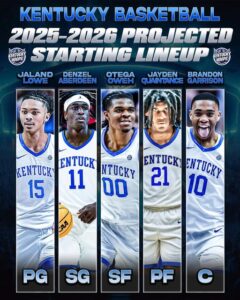
“The Real ‘Death Valley’: A Clash of Perspectives Between CFB Analyst and Clemson Fan”
In college football, rivalries extend far beyond the field. They infiltrate every aspect of the sport, from recruiting to game-day experiences, and even to debates over which stadium deserves to be called “Death Valley.” For years, Clemson University’s Memorial Stadium has proudly held the title of “Death Valley,” but recently, a prominent college football analyst stirred the pot by challenging the legitimacy of that claim, setting the stage for an intense back-and-forth with a Clemson fan.
The analyst in question, known for his deep insight and often polarizing opinions on the sport, made a bold statement during a segment on a well-known college football podcast. He argued that the title of “Death Valley” rightfully belongs to Louisiana State University’s Tiger Stadium, not Memorial Stadium in Clemson, South Carolina. The claim set off a firestorm of discussion among fans, players, and analysts alike, but none more heated than the argument between this CFB analyst and a passionate Clemson fan who refused to let the title slip away without a fight.
The “Death Valley” moniker has become synonymous with college football greatness. It represents an atmosphere where fans create an environment so hostile that opposing teams dread stepping onto the field. It’s a place where noise, passion, and pride combine to form one of the most intimidating home-field advantages in the sport. Over the decades, both Clemson and LSU fans have fiercely defended their stadiums as the true “Death Valley.” The argument between these two schools is not just about tradition; it’s about identity.
For years, Clemson fans have embraced Memorial Stadium as the one true “Death Valley.” It’s a place where the Tigers have built a rich history of success, not just on the field, but in the hearts of their devoted fanbase. The stadium, with its towering hill that players run down before each home game, the sea of orange-clad fans, and the deafening roars of support, has become a symbol of the university’s football prowess and its unwavering connection to the local community.
The argument, however, isn’t about the quality of either fanbase or team. Instead, it’s rooted in historical context. LSU’s Tiger Stadium, known as one of the loudest and most intimidating venues in all of college sports, has long been referred to as “Death Valley.” The name originated in the 1950s after a reporter, writing for the Baton Rouge Morning Advocate, described the stadium as a place where visiting teams would go to die. Over time, the nickname stuck, and LSU fans have worn it proudly ever since. With LSU’s consistently competitive football teams, particularly during their national championship runs, the reputation of Tiger Stadium as “Death Valley” has only grown stronger.
But that’s where the argument begins.
The Clemson fan, an alumnus with deep ties to the school, took to social media to fire back at the analyst’s comments. He pointed out that Memorial Stadium in Clemson had been called “Death Valley” since the 1940s, long before LSU ever adopted the nickname. The fan argued that the original “Death Valley” was built by Clemson’s passionate supporters, not LSU’s. He went on to emphasize the uniqueness of the stadium in Clemson, where fans gather not just for the game, but to be a part of a larger community experience. For him, the fact that Clemson’s Memorial Stadium had been home to so many monumental moments in college football history made it more deserving of the title.
The debate quickly escalated from social media posts to interviews, podcasts, and more. The analyst, who has a significant following, stood by his assertion that LSU’s Tiger Stadium was the true “Death Valley.” He argued that Clemson’s claim was based more on tradition and nostalgia than on any real claim to the name. The analyst pointed out that LSU’s Tiger Stadium has been the site of numerous high-stakes, nationally televised games that have left a mark on the college football landscape. He described the venue as one where even the most seasoned players get rattled by the deafening noise, the energy of the crowd, and the legacy of the team.
But the Clemson fan wasn’t backing down. He argued that the atmosphere in Memorial Stadium, especially during key matchups against top-tier ACC opponents, rivaled any experience in the country. The roar of the crowd, he claimed, was unparalleled when it came to making opposing teams feel uncomfortable. He reminded the analyst of the iconic moments in Clemson football history, including their thrilling national championship victories and unforgettable victories over rivals like South Carolina and Florida State, all of which had taken place in “Death Valley.”
Despite the growing intensity of the debate, both sides acknowledged that there was no definitive answer. Each stadium had its own claim to fame, its own traditions, and its own passionate fanbases. In the end, the debate wasn’t necessarily about which stadium was louder or which team had the better record. It was about pride—pride in the history of the program, the community it built, and the unforgettable moments that both Memorial Stadium and Tiger Stadium had given to college football fans over the years.
The fact that the argument had sparked such a passionate exchange showed just how much these stadiums and their nicknames meant to their respective fanbases. College football isn’t just a sport; it’s a way of life for so many. The stadiums where these teams play are more than just venues; they are the heart and soul of the game. For Clemson and LSU fans, “Death Valley” isn’t just a name—it’s a symbol of their teams’ commitment to greatness, and to their unwavering devotion to the sport.
In the end, the debate may never be resolved. Both Clemson and LSU fans will continue to defend their respective stadiums as the true “Death Valley.” For the analyst, the loudness and intensity of LSU’s Tiger Stadium may always be the defining factor. For the Clemson fan, the rich history and deep connection to the team and community will always make Memorial Stadium the true “Death Valley.”
However, what’s clear is that the conversation itself highlights the beauty of college football. It’s a sport that allows fans to become deeply connected to their teams, to their stadiums, and to the traditions that make each place unique. Whether you’re standing in the stands at Memorial Stadium in Clemson or Tiger Stadium in Baton Rouge, you’re a part of something much larger than just a game. You’re part of a living, breathing tradition that has defined college football for generations.
At the end of the day, the title of “Death Valley” may be subjective. But what’s undeniable is the passion, the energy, and the pride that both Clemson and LSU fans bring to their respective stadiums. Whether you’re cheering for the Tigers in South Carolina or Louisiana, you’re part of something that transcends any argument over a name. It’s about the love of the game, the thrill of the atmosphere, and the shared experience that makes college football so special.
So, while the debate may continue to rage on, one thing is certain: both Memorial Stadium and Tiger Stadium will remain iconic venues in college football history. The true “Death Valley” may be a matter of perspective, but the memories made in these hallowed grounds will endure for generations to come.





